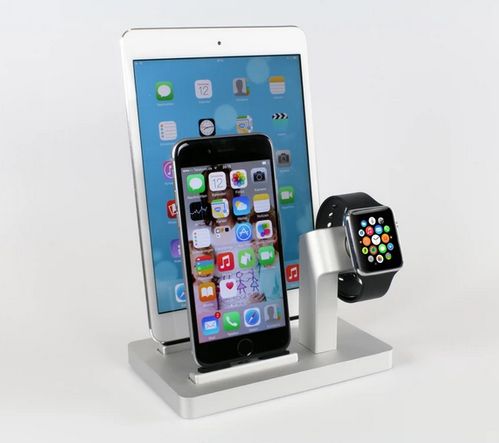Discontinuous Improvement - Innovate or Die (eventually)

Leading takes leaps
We live in an amazing world today. So many things we read about as kids in science fiction books are now a part of our everyday lives (except flying cars and hoverboards). But with all this innovation we have had, we still yearn for more.
Companies that want to lead and cash in on our never ending need for new stuff
must innovate or die.
I have a great respect for incremental improvement, and I've done that sort of thing in my life, but I've always been attracted to the more revolutionary changes. I don't know why. Because they're harder. They're much more stressful emotionally. And you usually go through a period where everybody tells you that you've completely failed.
-Steve Jobs
For a business to survive it needs Continuous Improvement.
For a business to lead it needs Discontinuous Improvement.
You never become a leader by imitating and improving slightly.
Discontinuous Improvement is Innovation; an evolutionary step. A creative act that breaks with the incremental chain before it. It is not enough to just innovate. The risk isn't in the innovation itself, it is in the adoption and commercialization of the outcomes. If you don't adopt change someone else hungrier will.
If you don't cannibalize your own market someone else will.
"But we are onto a winner and dominate a market that no competitor can touch us in!"
Kodak invented the digital camera in 1975. It filed for bankruptcy in 2012.
They had the innovation in their hands for 37 years.

It is not uncommon.
Trying to hold back new things from the public or not inventing them at all ultimately leads to a business’ demise. But time and time again businesses choose to "sweat an asset" they have now rather than cannibalize it with a better offering.
Business empires rise and fall and being at the top of the game is hard because there is much further to fall. Let’s have a look at a few fallen angels.
Polaroid
Polaroid, synonymous with instant photography, controlled 100% of the instant photography market and around 10% of the total American camera market at it's peak. Polaroid was innovating into digital. With one of the best digital cameras developed it approached the commercialization stage. Realizing digital photography would destroy profits, a senior manager at Polaroid asked, "Why should we accept a 38% margin? I can get 70% in film". Polaroid filed for chapter 11 bankruptcy protection in 2001.
100% of nothing is nothing.
Palm
Palm, was one of the earliest makers of smartphones, but could not follow up with success in the personal organizer business. Analysts pointed to the fact that the company was slow to realize that consumers wanted wireless voice and data from the same device. According to ZDNet, "Palm just couldn't find the formula for over-the-air synchronization with Microsoft Outlook, which business users demand and RIM nailed (at the time) with its BlackBerry device."
Atari
They kept their system with a few games and never thought a competitor was going to come in and wipe them out. They tried to sue everyone instead of innovating and competing with other systems.

Blockbuster
This video-rental chain survived the transition from VHS to DVD just fine—but then failed to adapt to the next big change. Blockbuster's stayed the course with brick and mortar.
Xerox
Had the first version of a GUI based Operating System that was copied and bettered by Apple which was again copied by Microsoft. Xerox still makes copiers.
Businesses who innovate & how
So let’s take a look at some more recent examples of companies who continually try to innovate and evolve to stay leaders in their fields.

The most successful Internet company of our time. At its core it is a search engine with ads. But in practice it continues to innovate and expand into new areas. It famously implemented "20% time" to drive innovation. This is where engineers were encouraged to spend a day a week working on their own projects.
Beyond search now many of its current projects are life-changing, or are aiming to be:
- Calico: Extending human life.
- Autonomous Vehicles: Reducing accidents and freeing humans up to do more.
- Google Fiber: A super fast internet access company.
- Glass: Wearable computing.
- Shopping Express: experimental same-day delivery with national and local retailers.
- Google Now: a quasi personal assistant who can tell you when the right time to leave for a meeting is or when your favourite band is in town.
- Chrome Cast: a HDMI dongle that beams web video to the TV screen.
- ChromeOS: An operating system that powers the sub $300 computer market.
- Chromebook Pixel: The high-end laptop
- Project Link: Bringing broadband to Internet-challenged Kampala, Uganda (pop. 3 million.)
- Street View: Now depicts the insides of airports and train stations; users can add their own images.
- WI-FI Via Hot-Air Balloon: Building wireless networks in sub-Saharan Africa and Southeast Asia.
and many more!
Apple
"I see cannibalization as a huge opportunity for us"
-Tim Cook
From Steve Jobs’ return in 1998, his company developed several watershed products and innovations that have reshaped the consumer personal computing and gadget markets. Some incremental innovations, such as the MacBook, have been improvements to existing Apple products. But others, such as the iPod and the iPhone, and iPad have been truly revolutionary in the way they have reshaped consumer expectations for portable music devices, cellular phones and personal computing.
- iMac (1998): As the first big product in Apple's makeover. One of the first consumer computers to be focused on making accessing the internet easy.
- iPod (2001): Is where Apple cemented its status as this decade's comeback kid. Capitalizing on consumers' desire to have their MP3 files on portable device, Apple scored a smash hit when the iPod landed. Accelerated the death march for Tapes, CD’s and other physical media for music.
- iPhone (2007): Apple turned the wireless phone market permanently on its head with the release of the iPhone. Apple's hugely popular iPhone smartphone has become the prototype for all feature-rich touchscreen smartphones and has consistently earned high marks from users for the simplicity of its operating system and its overall ease of use.
- MacBook Air (2008): The Ultra Thin MacBook Air wasn't a revolutionary innovation like the iPod or the iPhone, but it did serve as a nice new product for Apple to show off while it worked on its upcoming tablet.
- iPad(2010): Pushed tablet computing mainstream.
- iWatch(2015): Entered the wearables space.

When asked about Apple's "culture of innovation," Tim Cook says, "it's never been stronger. Innovation is so deeply embedded in Apple's culture. The boldness, ambition, belief there aren't limits, a desire to make the very best products in the world. It's the strongest ever. It's in the DNA of the company."
With Tim Cook’s positive attitude towards market cannibalization and rumours of televisions and cars in Apple’s future, we are likely to keep seeing them continue to innovate.
Amazon

Amazon CEO Jeff Bezos has said that his job is to encourage more "bold bets" and to embrace failure inside the company in pursuit of the big successes that "compensate for dozens and dozens of things that [don’t] work."
Starting out as an online book retailer to grow into the online retail shopping behemoth it is today has taken continuous innovation and product expansions including:
- Retail goods
- Amazon Prime
- Kindle: eReader
- Digital content
- Amazon Games
- Amazon Art
- Amazon Video
- Amazon Web Services
- Amazon Local
- AmazonWireless
- AmazonFresh and Amazon Prime Pantry
- Amazon Dash
- Amazon Prime Air
- Prime Now
- Amazon Supply
and more!
Their method for innovation include replicating a startup like environment by keeping teams small enough to be fed by two large pizzas, giving them autonomy and direct access to customers.
The [AWS] (https://aws.amazon.com/) cloud computing platform has produced upwards of more than 200 new features year on year.
Conclusion
Big, well run companies that do not innovate do not die an immediate death. Large companies often take many many years of stagnation of stifling to feel the effects of attrition. But they do die, they all do. While basic human needs and wants don’t change, the businesses that service them need to.
Nintendo
An interesting case to consider is Nintendo. The company was founded in 1889 as Nintendo Koppai by Fusajiro Yamauchi and produced handmade playing cards for a game called Hanafuda. It operated as a family run business for 60+ years.

It’s transformative leader Hiroshi Yamauchi took over in 1949 at 21 years of age after his grandfather passed away. He headed Nintendo for over 50 years, only stepping down in 2002. He converted Nintendo from a small Hanafuda card company to the multinational giant of the video game industry. He personally oversaw the hardware and software produced, exerting a tight quality control never seen in the video game industry before or since.
Historically known for continually disrupting the gaming console industry, Nintendo has now moved into a decline making losses every year since 2011 until this year (2015). Is making a better console going to be enough to compete in the changing face of gaming? Or do they need to make the same kind of leap they did going from paper games to digital to stay relevant and survive?
When you are the leader of your industry doing "more of the same" makes sense - it is what got you there. But it will never be what keeps you there.
If a market opportunity is large enough, someone is going to find a way to realize it.
Wouldn’t you rather be the one who seizes the opportunity than a competitor?





